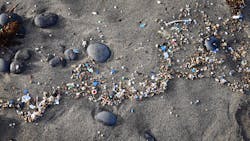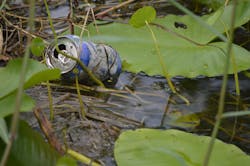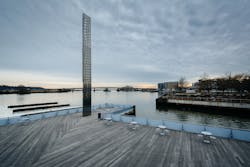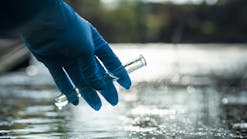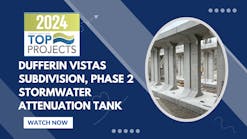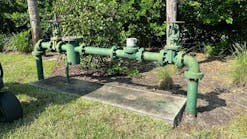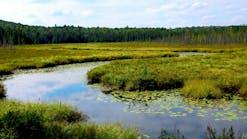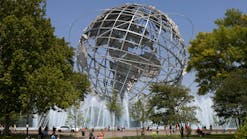Plastics are an emerging global pollutant. In fact, in the coming years, they could follow Per- and Polyfluoroalkyl Substances (PFAS) as the new contaminant of the stormwater industry. Despite this, they have not yet been addressed from a regulatory standpoint in the United States and practitioners still face many challenges in their efforts to address plastic pollution in stormwater.
Plastics in stormwater: the basics
Urban stormwater is considered a key contributor to plastic pollution across the globe. Next to agricultural areas, land-based trash and (micro)plastics are released or produced in urban areas through littering or mismanagement and move through the stormwater network. Plastic trash is considered unaesthetic, negatively affecting livability, recreation and tourism. In stormwater systems, it causes blockage and reduces storage volume. From the urban catchments, plastics make their way into the environment and open waterways. Leaked plastic trash harms wildlife and accumulates in terrestrial and aquatic ecosystems. Plastic materials are made of synthetic polymers, typically combined with chemical additives. Exposed to the environment, they break down over time without decomposing, making plastics extremely persistent pollutants. Below 5 millimeter size, particles are referred to as microplastics 1,2. Microplastics that were fragmented from larger plastics are called secondary microplastics; they are known as primary microplastics if they originate from small size produced industrial beads, care products or textile fibers. The smaller particle sizes spread even more and are harder to detect and manage. They come with their own set of concerns as microplastics more readily leak chemicals, adsorb and transport pollutants and toxicants and bioaccumulate in the food chain, including human bodies 3,4. Nanoplastics are particles below 1 or 0.1 µm5—so small they are barely detected let alone considered in treatment efforts.
Although (micro)plastics are recognized as a pollutant and stormwater is well understood as a major source, they have not been addressed from a regulatory or governmental standpoint in the United States 6. In 2015, California adapted their so-called “Trash Amendments,” municipal separate storm sewer system (MS4) permits, and statewide storm water permits require trash control implementation and prohibit discharge of trash above 5 mm size. While not required in other states, plastic can be addressed on municipal and regional levels into urban watershed management. The Trash Stormwater Permit Compendium 7 compiled tools to write trash-related provisions to be included in MS4 permits. Incentives for trash management are to prevent blockage and increase of efficiency of stormwater structures and conduits as well as maintain aesthetics of recreational and touristic areas and protect the environment. U.S. Environmental Protection Agency (EPA) and other governmental and non-governmental entities provide guidance, support and resources for plastic management. For example, the EPA Trash Free Waters Program offers technical and financial support for projects across the United States to prevent plastic release into waterways. A National Strategy to Prevent Plastic Pollution drafted by EPA is currently underway.
Best Management Practices
There are numerous resources and reviews on best management practices (BMPs) and capture technologies for plastic trash and microplastics available that can aid the selection and decision making on Trash/Macroplastic in Stormwater (Trash Stormwater Permit Compendium7) and rivers (Plastic waste capture in rivers: An inventory of current technologies15) and on Microplastic removal from urban stormwater8, to name a few.
Structural BMPs provide physical barriers within the catchment or stormwater network to prevent plastics from entering into the environment or remove already leaked trash from waterbodies. They may be installed at different steps of the trash cycle: before entering the network, within the stormwater network or within waterways. They mostly rely on physical separation mechanisms to remove plastics. Non-structural BMPs focus on source control and trash management and call on the public to reduce plastic release into the environment. A combination of preventive and mitigative BMPs can stop ongoing leakage into the environment while over time reducing existing pollution in rivers7. The majority of BMPs address macroplastics and trash. With limited resources and technologies their prioritization is reasonable —any mismanaged macroplastic in the environment is likely to break down into many microplastic particles.
Structural BMPs for trash and macroplastics
Various types of structural BMPs deployed within the stormwater network capture trash and separate it from stormwater using screens, nets, baskets or hoods. Those may be installed before or within a catch basin, on curb inlets or storm drains or at the end of pipes. The purchase and installation costs of most of these devices are low and they collect trash effectively, but they require frequent maintenance, especially during times of frequent storm events. Insufficient maintenance may cause clogging, trash leakage and flooding. Examples for catchment BMPs are cigarette receptables as well trash cans (traditional or more advanced such as solar powered trash compactors). They require frequent maintenance as well to avoid overload.
Stormwater management devices with chambers are installed in line in the stormwater network and collect larger volumes of trash. They are more expensive but require less frequent maintenance. Examples include hydrodynamic separators and full capture vortex separation system. Accordingly designed baffle boxes and inclined screen and linear gross solids removal devices separate plastics through screens and settling.
Structural BMPs for trash capture in open waterways use booms, nets, fences and skimmers that are either installed in fixed locations or attached to vessels to capture floating trash. Litter booms and litter traps are deployed in many urban waterways around the United States. Many of those systems are low-cost and adjustable to the river size. Collected trash and other debris needs to be removed frequently and they usually capture larger, floating plastics only. Large amounts of microplastic move through urban rivers and plastics of all sizes are moving through the water column and accumulates in riverbeds 16–18; those are not typically captured.The custom designed Nash Run Trash Trap in Washington, D.C.'s Anacostia River is one of the few devices capturing trash throughout the water column. Skimmer vessels are boats or floating devices designed to collect floating trash, either operated by humans or remotely controlled. They can be used for targeted trash collection but are limited in their capacities. Examples of less common, more elaborate devices are the Trash Wheels deployed in Baltimore, solar-powered wheels with a conveyer belt that collects items as large as tires. The Interceptor is a floating plastic extraction system developed by the Ocean Cleanup (Netherlands). These are very specialized systems with high capture potential but also very high installation and maintenance costs.
Structural BMPs for microplastics
Most of the above mentioned BMPs are designed for larger trash and macroplastics; they won’t capture many microplastics. To achieve high and reliable removal rates of microplastics, BMPs use settlement, filtration and adsorption mechanisms. Multiple existing stormwater treatment systems for other pollutants treat microplastics as well2. Microplastics settle in detention and retention ponds and are maintained within the sediment19–21, with higher retention times likely increasing removal rates as know from other particles 22. Constructed wetlands have large potential for microplastic removal as well, through a combination of settling, filtration and adsorption. Both plastic fragments and fibers are removed, although removal rates decrease with particle-size because of their higher settling times 2,19. Filtration and bioretention systems retain pollutants in the filtration media which has shown to be an effective approach for microplastics as well23,24. Vegetated systems appear to have higher removal rates as microplastics adsorb on plants and roots25. Larger microplastics are overall more readily removed than smaller microplastics, and fragments are easier retained than fibers2.
The mentioned microplastic BMPs are generally more efficient for larger plastic particles. Filtration and bioretention systems show overall the highest removal efficiencies and are recommended for microplastic compositions with mostly fragments. For watersheds with high fiber contents, ponds and wetlands are recommended, as they treat fiber and fragment types equally. Removal of small microplastics and nano-size particles is limited and not well understood in any currently used devices2.
Non-structural BMPs
Non-structural BMPs can be used to complement structural systems14. They work on a regulatory level, rely on voluntary support from the public or encourage behavioral change. Bans or restrictions of single-use products such as plastic bags, plastic straws or Styrofoam food containers and container deposit legislation (“bottle bills”) have shown substantial effect but require considerable legislative effort. Public programs such as Adopt-A-Highway, Adopt-A- Stream or organized clean up events rely on volunteers and need to be organized frequently. Education campaigns or storm drain stencils and signs encourage behavioral change and raise awareness. Other non-structural BMPs – Uncovered Load Ordinances and street sweeping services, among others – reduce trash along roadways.
Looking Ahead
Practitioners still face many challenges and lack of resources when it comes to addressing plastic pollution in stormwater. But plastic as an emergent pollutant is slowly transitioning from research phase to an industry concern and more financial and technical support for plastic projects is becoming available. New BMPs and capture technologies are tested and developed, and new studies and demonstration projects provide supporting data including costs and efficacy of BMPs. The country is getting ready to tackle plastic pollution.
References
1. Alimi, O. S., Farner Budarz, J., Hernandez, L. M. & Tufenkji, N. Microplastics and Nanoplastics in Aquatic Environments: Aggregation, Deposition, and Enhanced Contaminant Transport. Environ. Sci. Technol. 52, 1704–1724 (2018).
2. Freshwater Microplastics: Emerging Environmental Contaminants? vol. 58 (Springer International Publishing, 2018).
3. Bellasi, A. et al. Microplastic Contamination in Freshwater Environments: A Review, Focusing on Interactions with Sediments and Benthic Organisms. Environments 7, 30 (2020).
4. Campanale, Massarelli, Savino, Locaputo, & Uricchio. A Detailed Review Study on Potential Effects of Microplastics and Additives of Concern on Human Health. Int. J. Environ. Res. Public. Health 17, 1212 (2020).
5. Frias, J. P. G. L. & Nash, R. Microplastics: Finding a consensus on the definition. Mar. Pollut. Bull. 138, 145–147 (2019).
6. Brown, S. P. Reducing Aquatic Trash Through Stormwater and Solid Waste Management: Project Summary REport. (2022).
7. EPA Trash Stormwater Permit Compendium. EPA-841-R-21-001 (2021).
8. Silva, J., Morse, M. & Tamayo-Cañadas, V. Plastic waste capture in rivers: An inventory of current technologies. (2021).
9. Stang, C., Mohamed, B. A. & Li, L. Y. Microplastic removal from urban stormwater: Current treatments and research gaps. J. Environ. Manage. 317, 115510 (2022).
10. Haberstroh, C. J., Arias, M. E., Yin, Z. & Wang, M. C. Effects of hydrodynamics on the cross‐sectional distribution and transport of plastic in an urban coastal river. Water Environ. Res. 93, 186–200 (2021).
11. Haberstroh, C. J., Arias, M. E., Yin, Z., Sok, T. & Wang, M. C. Plastic transport in a complex confluence of the Mekong River in Cambodia. Environ. Res. Lett. 16, 095009 (2021).
12. Blettler, M. C. M., Abrial, E., Khan, F. R., Sivri, N. & Espinola, L. A. Freshwater plastic pollution: Recognizing research biases and identifying knowledge gaps. Water Res. 143, 416–424 (2018).
13. Olesen, Stephansen, Alst, & Vollertsen. Microplastics in a Stormwater Pond. Water 11, 1466 (2019).
14.Brooks, J. M., Stewart, C. J., Haberstroh, C. J. & Arias, M. E. Characteristics and fate of plastic pollution in urban stormwater ponds. Environ. Pollut. 320, 121052 (2023).
15. Braga Moruzzi, R. et al. Stormwater Detention Reservoirs: An Opportunity for Monitoring and a Potential Site to Prevent the Spread of Urban Microplastics. Water 12, 1994 (2020).
16.Sønderup, M. J. et al. Factors affecting retention of nutrients and organic matter in stormwater ponds: Nutrients and Organic Matter in Stormwater Ponds. Ecohydrology 9, 796–806 (2016).
17.Gilbreath, A. et al. Multiyear Water Quality Performance and Mass Accumulation of PCBs, Mercury, Methylmercury, Copper, and Microplastics in a Bioretention Rain Garden. J. Sustain. Water Built Environ. 5, 04019004 (2019).
18. Smyth, K. et al. Bioretention cells remove microplastics from urban stormwater. Water Res. 191, 116785 (2021).
19. Lange, K., Magnusson, K., Viklander, M. & Blecken, G.-T. Removal of rubber, bitumen and other microplastic particles from stormwater by a gross pollutant trap - bioretention treatment train. Water Res. 202, 117457 (2021).
Charlotte Haberstroh
Dr. Charlotte Haberstroh is a Water Resources Engineer with BV in Tampa, Florida, working in stormwater and watershed management. She earned a PhD studying stormwater-driven plastic pollution in urban rivers and is passionate about providing support for stormwater practitioners and utilities on managing plastics in stormwater.
